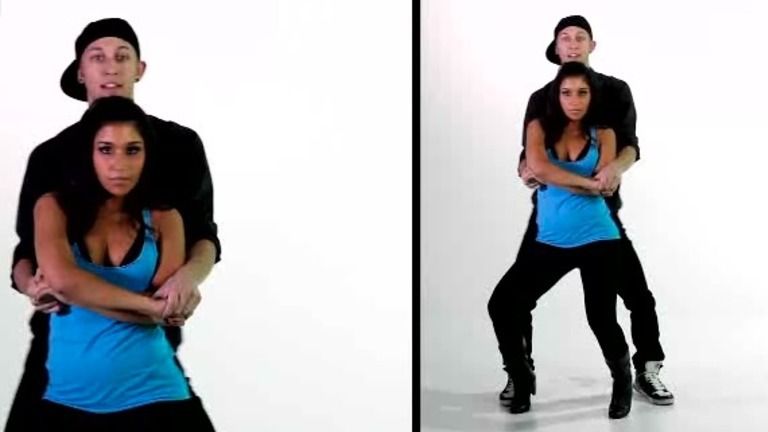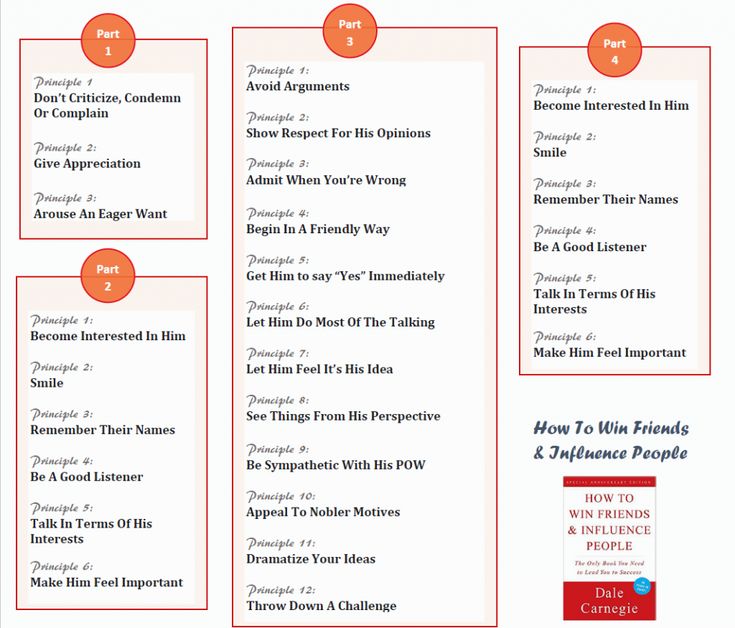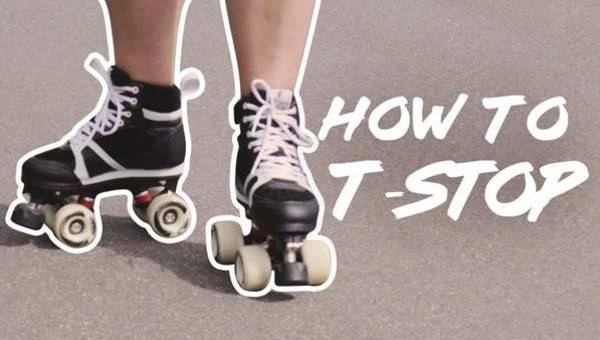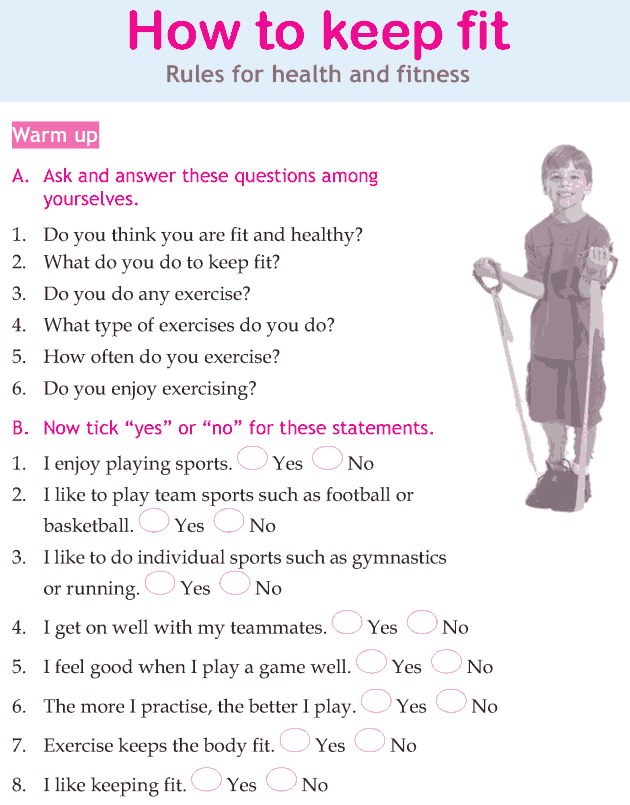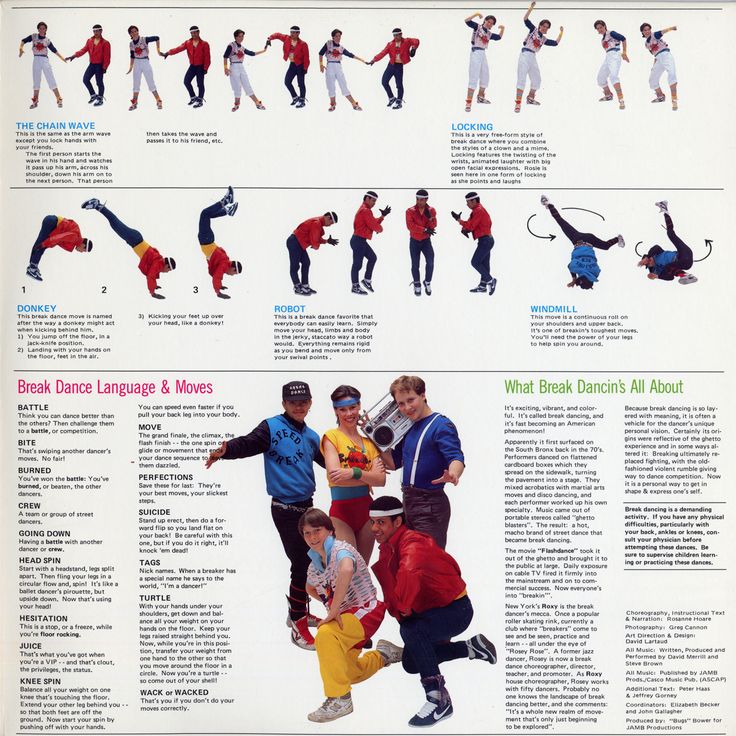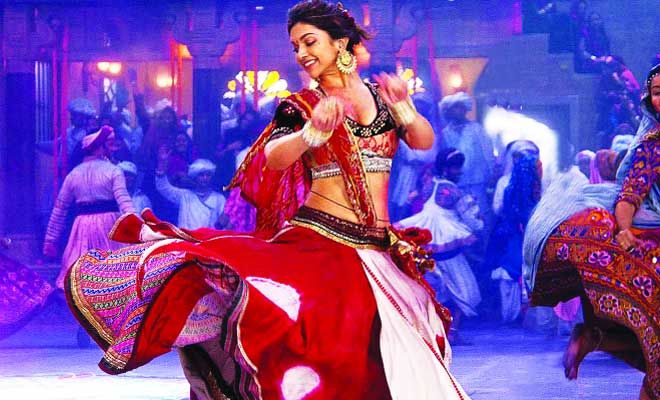How to move your hips while dancing bachata
Do I Have to Move my Hips When Dancing Salsa?
Share this
A lot of students that come in to my classes often ask me, "Do I have to move my hips when I dance?" "How much do I have to move my hips when I dance?" "Do guys also have to move their hips when they dance?" It sounds funny every time I hear it, as if the hip movement police is going to come get you if you're not shaking it enough. It's really important to address this so that you don't look silly next time you’re out salsa dancing at the club with your friends.
More...
Usually it's a non-Latin guy with a Latin girlfriend in class that is asking these questions. Latin women put pressure on their men to "shake it" when they are dancing, making remarks about how stiff they are, and how they need to loosen up and move their hips more.
Also, it's the movies' fault for portraying salsa dancing as some hip movement shaking contest. The people "dancing" in these movies seem to be wiggling, twisting and shaking EVERYTHING a whole lot!
The short answer is yes, guys and girls do move their hips when they dance, but it's not so simple as just shaking them about. The hip movement that occurs when dancing is supposed to look natural, not forced like in the movies. The hip movement happens because you’re alternating the bending of your knees. The same happens when you walk — your hips move because you’re bending and straightening your legs.
Imagine if you saw someone trying to move their hips when they walked, really focused and determined to shake their hips when they stepped. It would look completely silly and not attractive at all! The rule of thumb is: if you feel like you’re "trying" to shake it and forcing yourself to move your hips, then it's too much.
So what do you do? Stand up straight with both feet close together and legs straight. Now bend the right knee without bending the left one. Tadaaa! Your hips just moved. Now, straighten the right leg and bend the left knee and your hips move to the other side. If you keep this up, you will get your hips to move naturally. Practice that exercise. The key is to not force your hips to move but to focus on the bending of the knees. Your hips will start to move naturally little by little.
Master this little exercise so you can impress your friends at the next salsa party you go to! You're going to be moving like a natural in no time :)`
Loved this? Spread the word
Related posts
Places to go Latin Dancing in Fort Lauderdale/Broward County.
Read More
Salsa Clubs to go Social Dancing in Miami and Broward
Read More
The Importance of Musicality and Timing
Read More
4 Basic Bachata Steps To Dance Any Song
As you should know bachata lives in the last years its golden age, as it has become one of the dances with more followers. A relatively easy dance for the beginners and where the most expert dancers have many possibilities to show their talents.
A relatively easy dance for the beginners and where the most expert dancers have many possibilities to show their talents.
Emerged in the 1960s in the Dominican Republic as a transformation of the bolero to Antillean tastes, nowadays it is not missing in any dance hall or school with bachata lessons that boasts.
Its typical choreography was born in the 1990s, with two forms of bachata dancing:
- Dominican bachata: the couple usually dances with few figures and focusing on hip and foot movements.
- The urban bachata: the dancers get together and separate to be able to carry out different figures focusing the movements in the body.
For most experts, the main characteristic of bachata dancing is undoubtedly continuous hip movement, especially in the fourth beat (the rhythm of bachata has a four-beat beat, the dance of eight).
Bachata is a dance where personal style is fundamental. But what are the basic steps of bachata you should know to dance to any song?
#1.
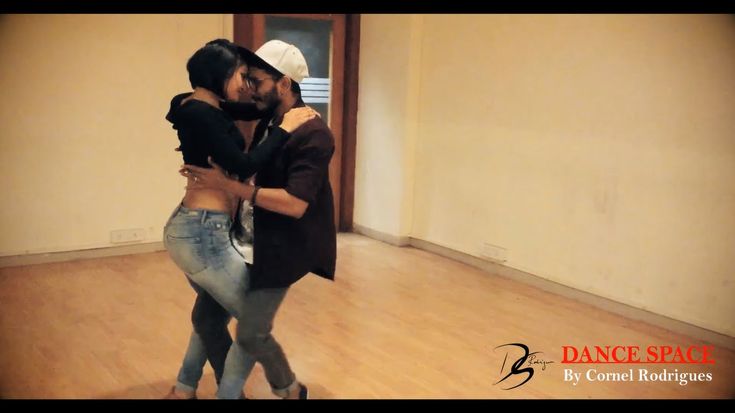 The basic step of bachata
The basic step of bachataThe basic step of bachata, in fact, consists of three steps that are danced in the first three times and a touch with the sole of the foot that is performed in the fourth time.
When the sole of the foot touches the ground in the fourth period of time, the hip moves upward. A hip movement that is more marked in women than in men.
The basic step of bachata must be carried out in good style from the beginning of the learning process. A recommendation that is usually made to master it is to keep up with the music and keep your knees slightly bent. In this way, the movement of the hip will naturally arise.
#2. Turns in the bachata
One of the fundamental movements of bachata is the twists and turns. The most basic of all is the one in which the man raises his arm so that the woman can make a complete turn to the rhythm of the music. Then they both return to the normal dance without losing the rhythm.
Then they both return to the normal dance without losing the rhythm.
The process of the twist in the man and woman would be as follows:
- The return of the man in the bachata
As she dances, she counts the times in her mind (1,2,3,4), and when she reaches the fourth beat, she begins to raise her leading arm (the extended arm) over the couple's head, starting to release the pressure of the other arm.
In beat 1 of the next measure, the pair will begin to turn by making a circle under the man's arm, gently holding onto the leading arm.
The turn will finish in time 3, so that in time 4 both the man and the woman are dancing in sync again.
The return of the woman in the bachata
In time 4, the (extended) leading arm of the man begins to rise. At that point, keep holding on to the leading arm, but remove the other arm from the partner's shoulder and move under the leading arm curve.
In beat 1, the woman turns in a circle under her main arm, trying to finish the turn in beat 3.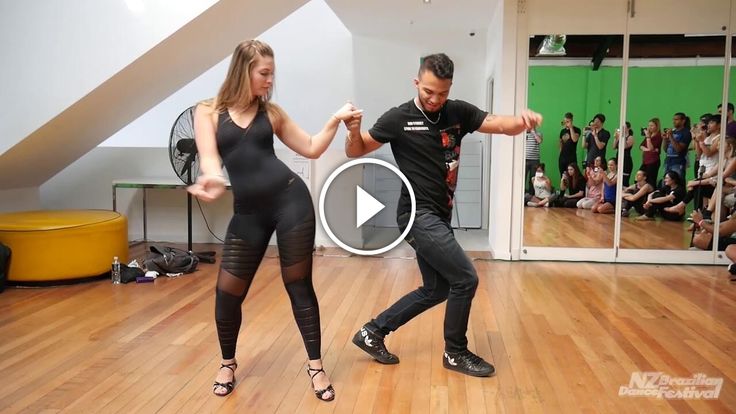 The intention is to reach the normal dance position in beat 4 and start again together the steps in the opposite direction in beat 1.
The intention is to reach the normal dance position in beat 4 and start again together the steps in the opposite direction in beat 1.
#3. Screw
Screw is a step of the bachata in which the girl passes in front of the boy. A position changed a little more complex than the previous ones, but without apparent difficulty.
In the coiling, the man advances and positions himself behind the woman. During the process, she will raise her left hand so that the woman can be placed in the screwed position.
In the course that the man passes behind the woman, she stays in the same place. This is how you get to the coiled position, with the man behind the woman.
#4. The waves of bachata
The waves are one of the main movements of sensual bachata.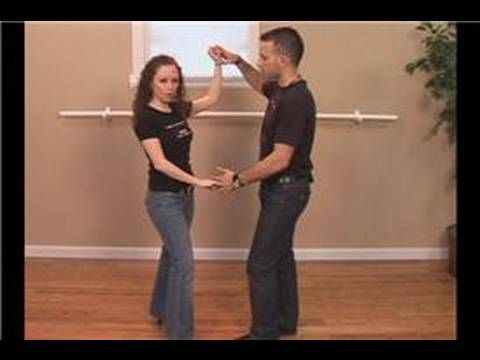 A dance that, as its name suggests, plays with the sensuality of the movements.
A dance that, as its name suggests, plays with the sensuality of the movements.
The wave is a very simple step to execute. You just have to step forward the body a little, climb up, lean back slightly and bring that tilt from the head down as if it were a wave that slides through the body.
The continuous repetition of the movement will be what makes us look like a wave.
As you have seen, the steps of bachata are not really very complicated or complex. But like everything else, it takes a lot of practice to be able to score and let yourself be guided to perfection.
Bachata is a dance in which people of all ages can participate and lately it sounds everywhere, so go ahead, sign up for bachata classes whatever your level. You'll have a great time!
Basic movements in bachata. How to dance bachata: the basics of technique
Elizaveta Rumyantseva
Nothing is impossible for diligence and art.
Contents
A bright, dynamic and sensual dance - bachata, originated at the beginning of the twentieth century, but is experiencing the peak of its popularity only now. The birthplace of the lyrical but incendiary dance is the Dominican Republic, and it acquired its characteristic features in the Caribbean. This musical style has gained recognition throughout the world, largely due to performers - immigrants from Latin America.
The history of bachata dance
It is known that the dance originated in the thirties of the twentieth century, and a little later bachata became a folk way to get away from problems, relax, become happier. In the 60s, the Dominican Republic was going through difficult times - the republic was in a state of cold war with Washington due to rampant corruption and obvious election fraud. The people had a hard time while the politicians fought for power. Bachata was danced to raise the mood in bars, on the streets, on the path near the house.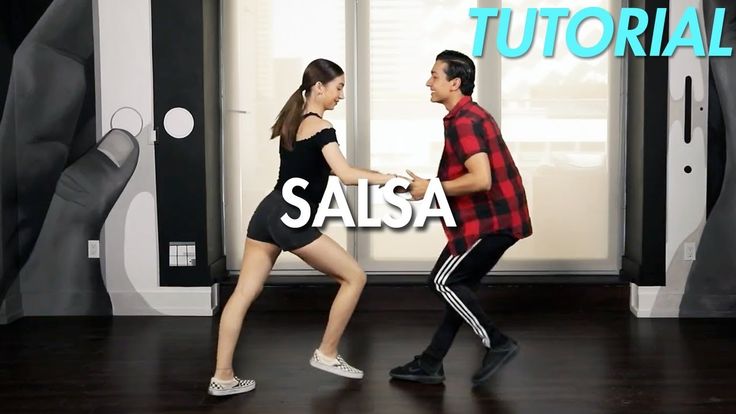 The dance came from the "bottom" and was considered vulgar - its performance was not encouraged at social events.
The dance came from the "bottom" and was considered vulgar - its performance was not encouraged at social events.
Singers and composers from the Dominican Republic, who have achieved world fame, played an important role in popularizing and developing the style. One of them, Juan Luis Guerra, released the album Bachata rosa, which was recognized by the high society of the Dominican Republic, which paved the way for world recognition for a sensual musical style. The compositions from the album were rotated on radio, television, played at weddings, parties. By the end of the century, bachata began to win the hearts of Latin American music lovers around the world. It is danced at salsotheques, clubs, discos dedicated to the Dominican theme.
Characteristics
Bachata is an original, memorable, but not difficult dance. It is performed at a moderate, even melancholic tempo, and the rhythmic pattern is 4/4. The finished measure is three steps, and on the count of "four" - the movement of the hip and the step with the straightened leg.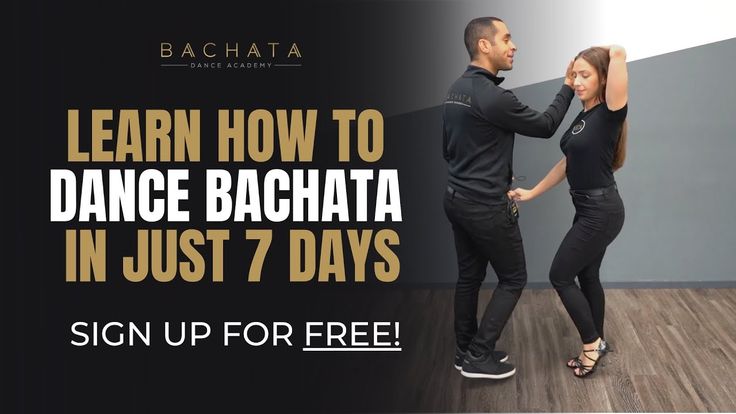 The dance is characterized by the closeness of partners on the verge of eroticism and passion, as well as measured, sensual music. The dance is concentrated in smooth body movements, swaying the hips and moving with springy legs. At the same time, the hands of the partners perform simple movements, complementing the overall pattern of the composition.
The dance is characterized by the closeness of partners on the verge of eroticism and passion, as well as measured, sensual music. The dance is concentrated in smooth body movements, swaying the hips and moving with springy legs. At the same time, the hands of the partners perform simple movements, complementing the overall pattern of the composition.
What is the difference between salsa and bachata
Bachata is very similar to salsa - both dances are built on a 4/4 time signature, great attention is paid to the smooth movements of the hips. At the same time, salsa has many varieties, in some styles of dance the first step is performed on a strong beat, in others - on a weak one. There are lyrical, and there are incendiary compositions. Salsa is danced alone, in pairs, in threes or fours.
Bachata is less diverse, it is gentle, sensuality and frankness are expressed in it. This is an erotic dance, it symbolizes passion, it is danced in pairs. Salsa is more energetic, the music is more complex, there are various figures.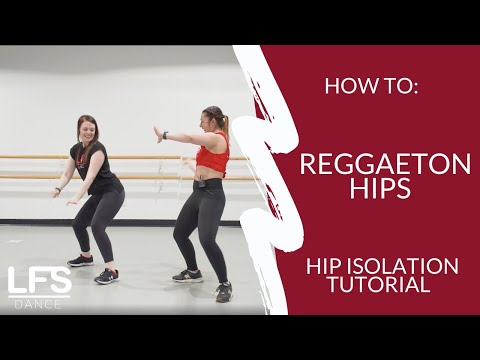 It takes time to learn how to dance it. Professionals advise starting with bachata and then moving on to salsa. Almost all salseros and Latin American dancers know how to dance both dances.
It takes time to learn how to dance it. Professionals advise starting with bachata and then moving on to salsa. Almost all salseros and Latin American dancers know how to dance both dances.
Music
Bachata is a characteristic musical style that tells about unrequited love, the difficulties experienced by lovers on the way to their happiness. The music is a mixture of two directions - the Cuban son and the Spanish bolero dance. At the same time, in bachata there is no rhythm inherent in many areas of Afro-Cuban styles, but there is an invariable melody - addictive, sexy. The main core of the melody is a sad melancholic motive, with notes of nostalgia, longing for lost love.
The key instrument is an ordinary acoustic guitar, which is combined with requinto. This instrument is the closest relative of the guitar, but the sounds extracted from it have a metallic timbre and are reminiscent of African motifs. The rhythm is set by Cuban double drums, which the musician holds with his feet. In combination with percussion instruments, maracas or guinos perform, brightening up the monotonous melody and giving it an expressive sensual coloring.
In combination with percussion instruments, maracas or guinos perform, brightening up the monotonous melody and giving it an expressive sensual coloring.
In the 90s, the style of music began to change, thanks to its popularizers. Manuel Tejada adorned the arrangement of his songs with the sound of a synthesizer and accordion, and Antoni Santos changed the rhythm of the music, sped it up due to tempo variations. Bachata-Cabaret and techno suggest the presence of rhyme in the words of the songs, which have a double meaning, balancing on the verge of erotica and vulgarity.
Styles
Bachata dance does not have a wide variety of styles, but three main ones can be distinguished. Among them are the following directions:
- Dominican variety or classic version. This style of bachata dance is traditional for the islands, it is romantic and soulful, but not widely used in the world. The center of attention is the movement of the dancers' legs, complex figures that are performed with the participation of the hips and waist.

- Urban or European bachata is a popular form of dance. The main emphasis is on the work of the body and the movement of the partner's hips. Suitable for beginners - the dance consists of simple steps and a minimum of complex figures.
- Modern. The style is modern with hip-hop and other specific popular dance moves. This is a club genre of bachata - it is dynamic, incendiary, which is still developing.
How to dance bachata
This dance is designed to work in pairs, but the basic movements are learned one by one. Key elements of bachata:
- Basic step. Bend the right knee, shift the body weight to the left. Take a step to the right, transfer the weight to the same side, put the left foot, repeat. Perform all movements on the account of "one, two, three, four." Take two steps to the other side.
- Forward-backward. The left leg is motionless, the right one needs to take a step forward, attach the leg, then take a step back and attach again.
 Follow the steps with the movements of the hips, transferring the weight of the body from the right leg to the left, and vice versa.
Follow the steps with the movements of the hips, transferring the weight of the body from the right leg to the left, and vice versa. - Turn. Stand straight, looking ahead. At the expense of "one" with the right foot, you need to take a step to the side, while turning the body to the right. On the count of two, turn 90 degrees on your right foot, placing your left foot shoulder-width apart. Raise the left thigh and place the foot on the toe. Continue to describe the circle with the body, turning on the left leg. Return to starting position, finish with an accent by lifting the right thigh and bending the knee. Repeat on the other side.
- Forward movement with the "eight" of the hips. Take a step forward, transfer the weight of the body to the right thigh, put the left leg, bending both knees. Simultaneously with the step, load the left thigh, then the right again. Try to describe the “eight” with your hips, lying in a horizontal plane.
- Crossed steps. Take a step to the side with your right foot, transfer your body weight to your right thigh.
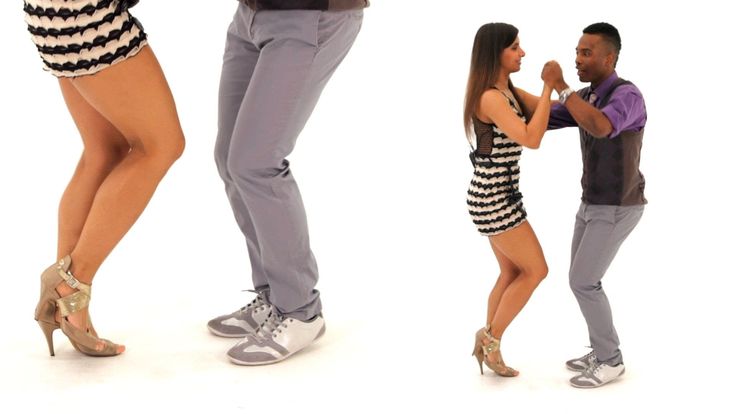 Pull up the left leg, placing it in front of the right so that you get a cross. On the count of "three" take another step with your right foot to the side, and on the count of "four" - pull up the left, bending your knees. Each step involves transferring weight to the thigh, relaxing it along the way. On the count of "four" it is necessary to lift the left thigh up due to the contraction of the lateral muscles of the waist.
Pull up the left leg, placing it in front of the right so that you get a cross. On the count of "three" take another step with your right foot to the side, and on the count of "four" - pull up the left, bending your knees. Each step involves transferring weight to the thigh, relaxing it along the way. On the count of "four" it is necessary to lift the left thigh up due to the contraction of the lateral muscles of the waist.
While dancing, you can bend your elbows and keep your hands in front of you. Moving your hips, make circular movements with your hands, trying not to focus on them. The task of the beginner is to learn how to step correctly and move the hips to the beat, catching the lyrical rhythm of bachata. Over time, you can try to connect your hands, but when working in pairs, they are under the partner's shoulder blades.
How to learn to dance
It is quite possible to master the principles of dance on your own - you can hone your skills by dancing in front of a mirror.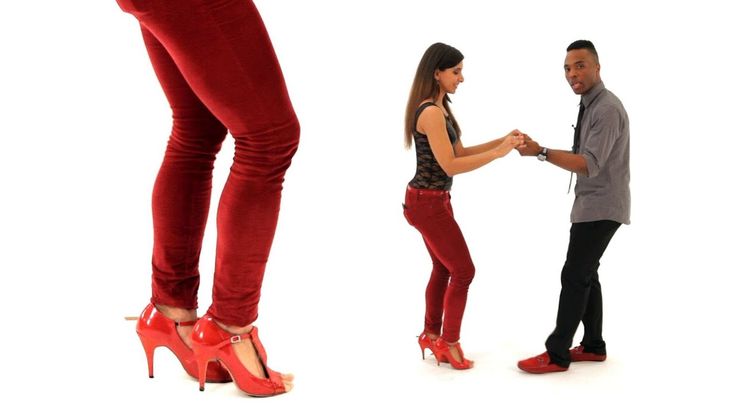 Learning how to dance bachata at home is possible at the initial stage. When moving to the next level, when a partner is required, it is better to take courses or pay for individual lessons with a trainer. There are several dance schools in Moscow where they will teach you how to dance, and the first lesson will be free. These are GallaDance, dance schools "Bachata", "Spicy Salsa" and "Keep the rhythm". Starting to study, you should take into account the following features of the dance:
Learning how to dance bachata at home is possible at the initial stage. When moving to the next level, when a partner is required, it is better to take courses or pay for individual lessons with a trainer. There are several dance schools in Moscow where they will teach you how to dance, and the first lesson will be free. These are GallaDance, dance schools "Bachata", "Spicy Salsa" and "Keep the rhythm". Starting to study, you should take into account the following features of the dance:
- Bachata means close contact between dancers - physical and emotional. Sometimes the need for intimacy becomes an obstacle to learning dance.
- Dance requires a sense of rhythm from the dancer, you need to listen to music and strive to get in time. This will help to achieve synchronization with the movements of the partner.
- Simultaneously with training on the dance floor, flexibility should be developed - this quality is necessary for the qualitative development of dance.

- Homework is carried out to music in front of a mirror in order to see the erroneous execution of movements.
- To make the dancer feel confident in clothes and shoes, it is advisable to wear a tracksuit and comfortable shoes or sandals with heels.
Video
Did you find an error in the text? Select it, press Ctrl + Enter and we'll fix it!
There are only two fundamental moments in technique: work with the body and "kick" to the 4th and 8th counts. The easiest, most effective, reliable and at the same time the cheapest way to master these elements is to learn them in, where they will tell you everything about the details of how muscles and joints work.
Friends, people regularly come to us with the words “we studied at parties / on the bridge / at master classes in the Tiki bar, we know the whole base, take us to the continuation group”. We are not sorry, we take it, but as a rule, after 5 minutes of class, these people realize that they have overestimated their level.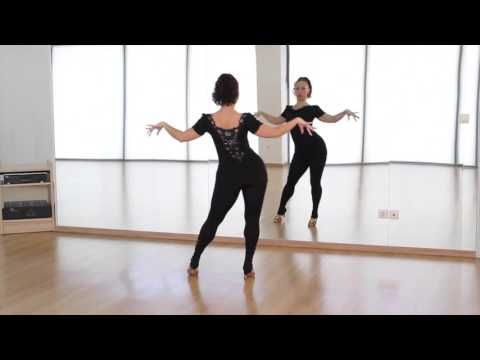 Not because it is so difficult with us, but simply at master classes and during parties it is impossible to learn: the format is different.
Not because it is so difficult with us, but simply at master classes and during parties it is impossible to learn: the format is different.
Core work requires mobile and stretched back muscles, abs and lower back. If you are not used to working with them, you should start with simple back stretches and tilts from side to side, familiar to everyone from school.
In general, lack of physical fitness is perhaps the most common obstacle to the growth of dance skills. And here it is important to understand that what is important for dancing is not your ability to pull weights, throw balls or run fast, but something completely different: plastic , movable and stretched muscles, ready to work.
Plastic is not flexibility!
The difference here is in the anatomy. Flexibility is ligaments and tendons. Plastic is primarily muscles and work in the joints. If you stretch the ligaments of the inguinal region, you can sit on the twine. Can you beautifully and quickly work with your feet? No. Stretching is necessary for plasticity, but a stretched body is not necessarily plastic.
Stretching is necessary for plasticity, but a stretched body is not necessarily plastic.
For the development of plastics you will need:
- "isolation",
- stretching and
We were lucky to learn from the wonderful master of movement, Alexey Aleksentsev, on the right in the video his plastic class. If you decide to take dancing seriously, save the video to your computer, watch and review. This is a mandatory and, unfortunately, the only textbook no one else in Russia knows how to teach like that.
But back to bachata. Here, for a beautiful and full-fledged dance, you do not need to perform miracles of self-control, it will be enough for 15 minutes 3 times a week to warm up your body and then stretch it in the area from the middle of the thigh to the ribs / shoulders.
Everyone knows these trivial exercises from school and is quite capable of doing them at home, so we do not waste valuable class time on them.
And the second necessary technical element of bachata is "kick".
There is nothing even to describe here, it is important just to remember your gender: girls kick from the hip, boys - from the body, and don't confuse!
Bachata in terms of music and dance does not stand still and is developing rapidly. Today you can talk about a kind of boom and self-sufficiency of the sensual direction. It originated in Spain and is one of the most popular in Europe - without not a single major festival can do without it. The Spaniards Korke and Judith are considered to be the creators, and the dance itself is distinguished by a wide variety of figures, the presence of supports and the admissibility show elements compared to traditional Dominican bachata. staging partners became closer, closer contact appeared. Leading a partner now more refined and directed, which makes the dance even more sensual. The bachata sensual does go every part of the body and the style reveals more possibilities for expression their emotions, as well as the possibilities of the body that more experienced dancers have.
For those who want to learn the bachata sensual style or try to dance a small a bunch, teachers of the school of Latin American dances "Keep the Rhythm" Yopi Quintero and Natalia Poddubnaya give detailed instructions, which will help you master the basic steps of bachata sensual and combine them into a dance. To date, the names of the basic figures of the bachata style sensual are not standardized and may occur under other names in different sources or most often without names, so novice teachers of this style also find a lot of interesting things here.
To begin with, briefly about the main terms that are used on lessons :
And now let's get down to basic figures:
- BASICO -
Basic bachata step.
Steps: two side steps.
Account: one-two-three and four is emphasized.
Items in pairs: open, closed, full contact and shadow. Stepping from side to side side, but forward and backward movement is also possible.
Technique: at times you take a step to the side, put your foot on two, take three steps to the side, on four substitute the leg without transferring body weight and focus on the hip or foot.
- TURN -
Basic turn on two side steps to the right or left in different positions. Simultaneous rotation of partners is possible or only the partner turns under the partner’s hand (option in the video).
Steps: turn on two added steps. On the second step there is an accent hips for a count of four, as in basico.
Account: times, two, three, emphasis on the fourth count.
Items in pairs: open, closed, shady.
Full 360 rotation degrees.
Technique: partners move in a closed position, momentum partner for once. The turn takes place in parts: on the counts of one and two - we turn 180 degrees, three - another 180 degrees, four we substitute the leg without transferring weight, as in basico.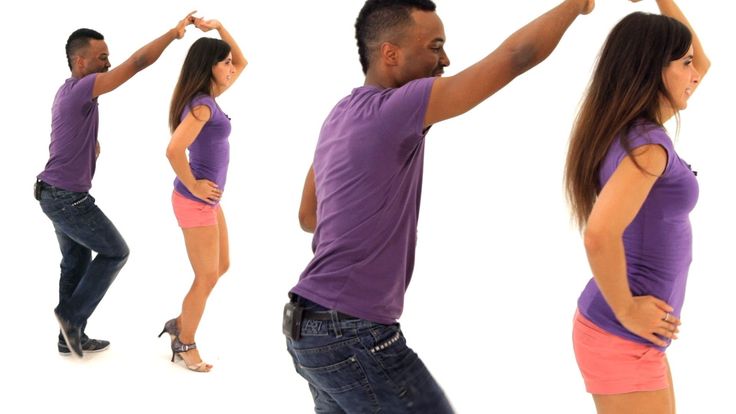
- OCHO -
Figure eight movement of the hips in place.
Steps: in place.
Account: times, two, three, four.
Items in pairs: open, closed, full-contact, shadow.
Trajectory, direction of travel: in place.
Technique: feet shoulder width apart. The key point is the work of the hips. There is a shift in body weight from the right leg to the left, combined with the movement of the hips along the trajectory of the eight. The hip describes the trajectory in the form eights. It is also possible to perform the action ocho in basico with emphasis on the count of four.
- KOHKI -
Side steps with stand and body rotation. It is performed on each count without a bachata accent.
Steps: step right and step left with stand.
Account: times, two, three, four.
Pair position: open, closed, shady.
Trajectory, direction of travel: from side to side.
Technique: movement comes from turning the body on each count without bachata accent on the 4th count.
- MEDIA LUNA -
(Spanish crescent) - basic step with arms raised by both partners. Hands describe crescent trajectory.
Steps: basico.
Account: is the same as in basico.
Pair position: closed, shady.
Trajectory and direction of hands: for one, two - both partners raise their hands up, three, four - down.
Technique: from a closed position to the account of partners' hands in in close contact they go down, on the count of two they go up through the sides, at the expense of three we lower in front of us and four - we return to the starting position.
- CORONA -
(C Spanish crown) - basic step with the simultaneous throwing of hands on the head of the partner and the partner.
Steps: on 1-2-3-4 basico to the side, 5 steps, skip 6-7, stand 8.
Account: times, two, three, four, five, six, seven, eight.
Pair position: open.
Trajectory, direction of travel: from side to side.
Technique: in the first part from an open position when partner holds the partner by the hands, the partner simultaneously draws both hands (his and partners) on the neck, in the second part both partners perform a circular motion head. The partner makes a circle with her hips simultaneously with the movement of her head.
- CAMPANA -
Basic step to and from each other diagonally.
Steps: steps as in basico.
Account: as in basico.
Pair position: open, shady.
Trajectory, direction of travel: steps are performed in a diagonal forward, diagonal back.
Technique: partners equally approach and equally move away from each other to each other and from each other, opening now to the right, then to the left, changing hands on the count of two.
- PASEO -
Lady's basic turn without breaking the arms and continuing to move in the shadow position.
Steps: as in the base turn.
Account: is the same as in basico.
Position: from closed to shady.
Trajectory and direction of movement: first half as in the base turn, the second as in the campana figure only rotated 180 degrees.
Technique:
- M: turns the partner under the arm without releasing the other hand, thereby there is a winding of the partner on the hand. The second half is a campana figure.
- F: The first half is a basic turn into partner's hand, the second half is a campana figure.
- ARRIVA -
Turning the lady from the spot to the left by 180 degrees.
Steps:
- M: one - from the left forward, two - right in place, three - left leg back, four - bachata accent.
- F: one - step with the right foot back, two - step with the left foot in place, three - step into the turn with the right foot, four - stand.
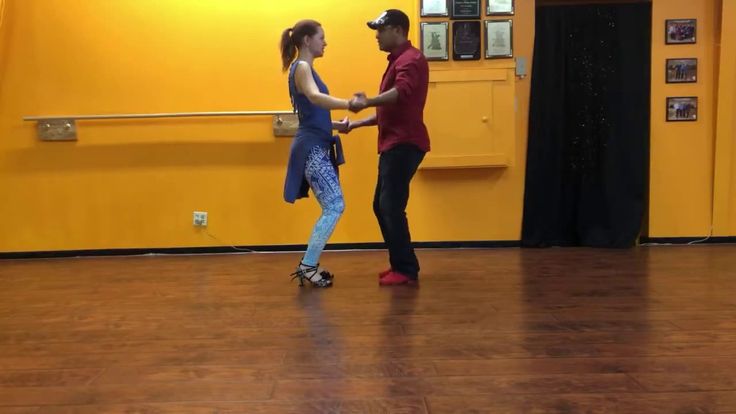
Account: times, two, three, four.
Position: from closed to shady.
Trajectory, direction of travel:
- M: forward, backward, in place.
- F: back, in place, turn 180 degrees.
Technique: at one time the partner leads the right hand of the partner from below up like in media moon (at the same time, both partners turn their body behind the hand), raises by two hand up, turns the partner to the left by three (the partner turns with raised right hand) and for four puts the partner’s hand on the waist in the shadow positions.
Bachata is one of the most popular and passionate dances, which is extremely common among people who are fond of dance art. Using this video, which reveals the main steps and elements of this dance, both a person who already has dance experience and an absolute beginner can achieve success. It is worth remembering that in bachata everything is of paramount importance: both the technical savvy of the dancer, and his passion, and even how well the outfit for the dance is chosen.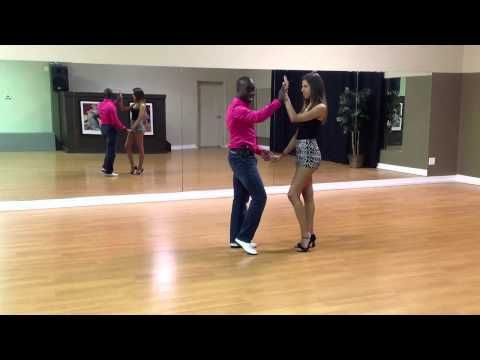
Bachata Basic Steps and Elements Video Lesson
Bachata Basic Element
Experts often say that the basic meaning of bachata lies in the nature of the movements that underlies this dance art. Having seen bachata once, it is difficult to confuse it with something else. It must be remembered that the basic step in bachata consists of the following sequence:
- left leg;
- right leg;
- left leg;
- tap (weight on the leg is not transferred).
When doing this basic movement in place, begin with your left foot. After learning the basic step in place, move on to learning side steps.
Bachata basic steps
Recall that there are the following basic movement patterns in bachata:
- basic step in place;
- basic step with advancing to the side;
- basic step with a partner (paired).
Remember that almost always the basic movement starts with the left foot.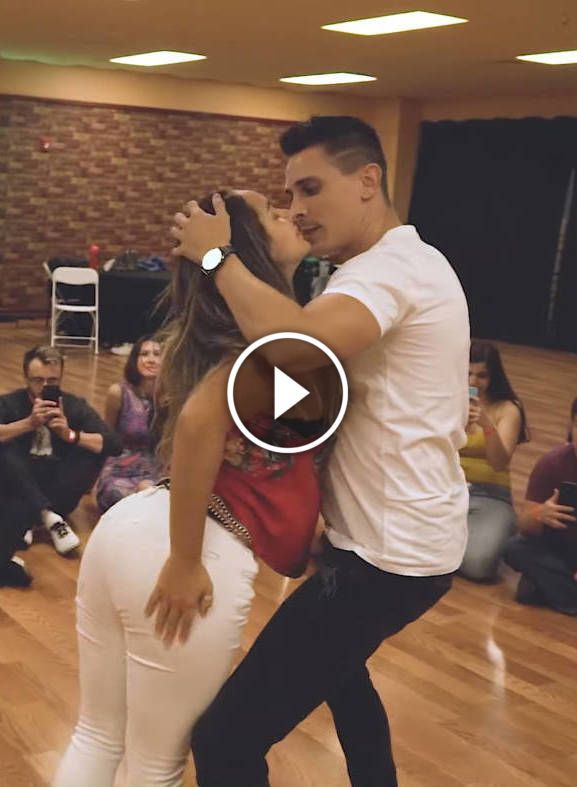
Using this video lesson, you can effectively dance bachata both on your own and with a dance partner. Choose the right music that can bring out the individuality of the dancers as much as possible.
is a beautiful and sensual pair dance that originated in the distant Dominican Republic. Only in a hot country of snow-white sand, azure sea and heavenly landscapes could an equally hot and passionate dance be born. Bachata is smoothness of movements, flexibility and plasticity of bodies, hugs and a romantic mood. If you look at a couple performing this dance, there is a feeling of complete unity and harmony of the partners, as if they are driven by one common wave of bewitching music. Today, bachata is gaining more and more fans, and the main role in this trend is played by the simplicity of the movements performed, but this is an erroneous assumption that may arise when first visually introduced to the dance technique.
Bachata - how to dance correctly?
Bachata lessons should be held in pairs with a dance partner, and such an emotional contact should be established between the partners, thanks to which the dance will be performed lively and organically.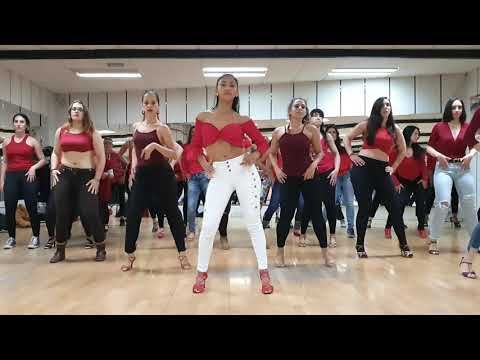 It is very important for dancers to open up and make contact with a partner, and if for people with a South American temperament this is quite natural, then for reserved Europeans it is very difficult. Despite its apparent simplicity, bachata is a whole complex of complex movements that should look natural. And for this, lesson after lesson should be honed technique: here the most important thing is the synchronism of the partners and the correct course of each part of the body. In the classroom, dancers will have to master many wave-like movements and deflections, and this requires hours of training.
It is very important for dancers to open up and make contact with a partner, and if for people with a South American temperament this is quite natural, then for reserved Europeans it is very difficult. Despite its apparent simplicity, bachata is a whole complex of complex movements that should look natural. And for this, lesson after lesson should be honed technique: here the most important thing is the synchronism of the partners and the correct course of each part of the body. In the classroom, dancers will have to master many wave-like movements and deflections, and this requires hours of training.
A few rules for beginners
Those who are captivated by this extraordinary dance, which combines the contradictions of passion, tenderness and unpredictability, should definitely learn bachata. They will be helped by dance classes with experienced trainers who will explain the dance technique in practice. But not always and not everyone has the opportunity to attend a dance school, and basic skills will never become superfluous.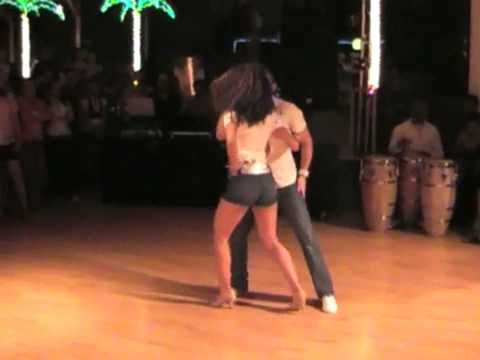 Here are a few basic and most important rules of bachata.
Here are a few basic and most important rules of bachata.
- Firstly, the leader in a pair is a man, and a woman is a follower. As if obeying her partner, she dutifully follows him, and each new step is certainly accompanied by a smooth rotation of her hips.
- Secondly, bachata classes require good stretching, especially in some of the thigh and psoas muscles. However, this is not a stretch in its classical sense, when the main goal is to bend the body at a maximum angle. The plasticity of the muscles is important here, due to which the rotation of the hips will, as it were, give a wave throughout the body. For pre-training, simple tilts and circular rotations of the torso are best suited.
- Thirdly, the main element of the dance is the kick, without which bachata is inconceivable. This is a smooth rotational movement that women should perform with their hips, and men with their entire body. The one who managed to comprehend this element of dance, one can say, comprehended the very essence of bachata.
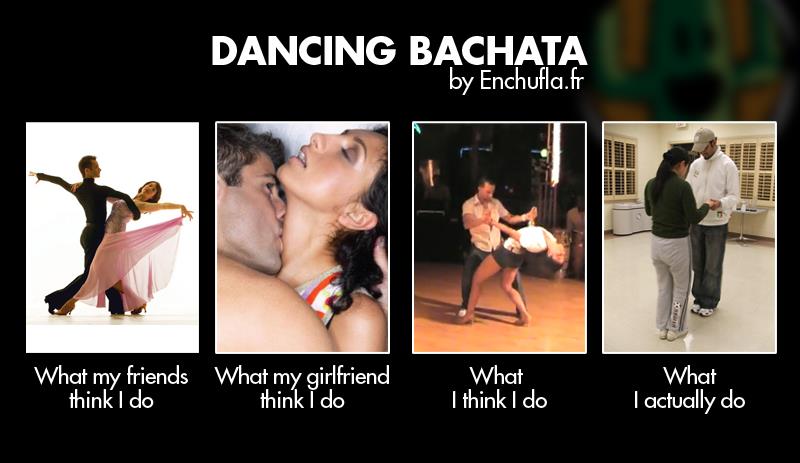
- Finally, each step in the dance consists of 3 small steps, which should be performed at ease, while maintaining the visual lightness and playfulness of the movements.
And most importantly: in order to master bachata, it is not enough just to learn the basic movements and combinations. It is important here to be able to improvise, because bachata is improvisation, full of passion and emotions, like the temper of South Americans.
Movements in bachata. What is bachata
Bachata video watch you can repeat and learn even at home, we advise you to watch bachata videos in series, learning from one dancer. However, it should be noted that from the lessons of bachata it is necessary to take only the most necessary and be careful about the technique being performed! It is not difficult to master it, but you need to be quite attentive to which foot you start the move with (this can be quite unusual), how you hold your back, which hand you will lean on your partner / partner.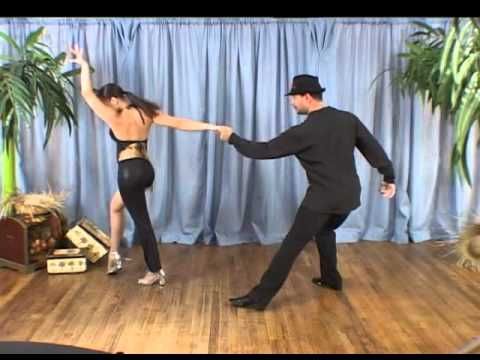
Bachata video is useful to watch and for those who want to improve their technique, you will see a couple of tricks in the lessons that you will definitely want to transfer to the dance floor, to practice with a partner and make your dance more spectacular. It is for this purpose that it is worth coming to our lessons at the best bachata dance school in Moscow!
SIGN UP FOR A FREE CLASS
VIDEO: Basic Bachata Steps
VIDEO: Basic Steps + Lady Turn
VIDEO: male twist in bachata
VIDEO: basic steps in open and closed position
VIDEO: Bachata Bundle for Beginners
VIDEO: bachata link for confident dancers
In this dance it is very important to feel the general mood, get positive emotions and ignite your partner. After all, without it, nowhere! That is why watching bachata videos is useful for a dancer of any level to understand the general atmosphere, enjoy a beautiful dance and dream about how you will dance if you continue your training. To look at the technique of professional dancers, at the beauty of their numbers and incendiary mood is always a great temptation and temptation!
To look at the technique of professional dancers, at the beauty of their numbers and incendiary mood is always a great temptation and temptation!
Bachata video lessons
Bachata dance is a manifestation of maximum trust between partners! And it's so easy to learn! We say with confidence that you can learn the basic steps of bachata even if you watch video tutorials . But at the same time, any technique requires training! So we are looking forward to salsero of any level in our trainings at the best school in Moscow. Our school has organized special practices where you can master those dancers' signature stylish tricks, try out new moves, practice polishing basic techniques and / or just have a great time with a partner!
TRIAL LESSON FOR BEGINNERS
We remind you not to be afraid to come without a partner! Salsa and bachata are both good because partners change, so you should not be embarrassed by either your physical preparation, or height, or your solo desire to dance!
To dance with pleasure and be relaxed, you need to feel the atmosphere of the dance, so we suggest you watch videos from our and foreign dance masters.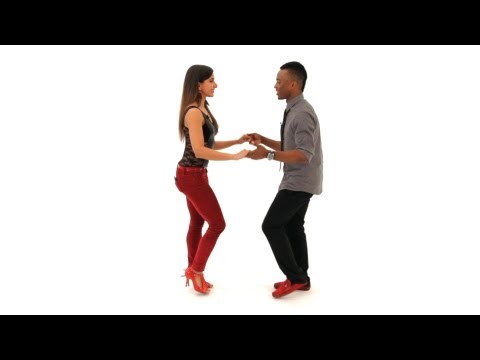 Incendiary numbers, refined technique, ease of movement, smooth lines, and most importantly mood - all this will make you start dancing right now. Get ready for it!
Incendiary numbers, refined technique, ease of movement, smooth lines, and most importantly mood - all this will make you start dancing right now. Get ready for it!
It's also nice that lessons can be found for all levels of choreography, from basic steps to complex choreographies. And one more thing, today video lessons are presented literally in all languages. So you can practice your Spanish or English at the same time if you feel the need!
Bachata dance tutorials are also suitable for those who are often embarrassed to go to the dance floor and come to our lesson completely unprepared. Watch the lesson and practice the basic steps, turns, so that you can already imagine what awaits you in advance and feel that you do not stand out from the others! We advise you not to be afraid of anything, and feel free to come for real pleasure to the bachata school, where you have fully equipped
Rules for protecting information about site users site
1. General provisions
General provisions
1.1. These Rules are an official document of SP Sobiray Pavel Evgenievich (hereinafter referred to as the Site Administration), and determine the procedure for processing and protecting information about individuals using the services of the Internet site (hereinafter referred to as the Site) and its services (hereinafter referred to as Users).
1.2. The purpose of these Rules is to ensure adequate protection of information about users, including their personal data, from unauthorized access and disclosure.
1.3. Relations related to the collection, storage, distribution and protection of information about users of the Site are governed by these Rules, other official documents of the Site Administration and the current legislation of the Russian Federation.
1.4. The current version of the Rules, which is a public document, is available to any Internet user by clicking on the link. The Site Administration has the right to make changes to these Rules. When changes are made to the Rules, the Site Administration notifies users of this by posting a new version of the Rules on the Site at a permanent address no later than 10 days before the entry into force of the relevant changes.
When changes are made to the Rules, the Site Administration notifies users of this by posting a new version of the Rules on the Site at a permanent address no later than 10 days before the entry into force of the relevant changes.
1.7. By using the Site, the User agrees to the terms of these Rules.
1.8. If the User disagrees with the terms of these Rules, the use of the Site and its services must be immediately terminated.
2. Terms of use of the Site
2.1. Providing services for the use of the Site and its services (hereinafter referred to as the Site Services), the Site Administration, acting reasonably and in good faith, believes that the User:
has all the necessary rights to allow him to register and use this Site; indicates reliable information about himself to the extent necessary to use the Services of the Site; acquainted with these Rules, agrees with them and assumes the rights and obligations specified in them.
2.2. The Site Administration does not verify the accuracy of the received (collected) information about users, except when such verification is necessary in order to fulfill the obligations of the Site Administration to the user.
3. Purposes of information processing
The Site Administration processes information about Users, including their personal data, in order to fulfill the obligations of the Site Administration to Users regarding the use of the Site and its services.
4. Composition of user information
4.1. Users' personal data Users' personal data includes:
4.1.1. provided by the Users and the minimum required for registration on the Site: name, surname, mobile phone number and/or e-mail address;
5. Processing user information
5.1. The processing of personal data is carried out on the basis of the principles:
a) the legality of the purposes and methods of processing personal data;
b) good faith;
c) compliance of the purposes of processing personal data with the purposes predetermined and declared during the collection of personal data, as well as the powers of the Site Administration;
d) compliance of the volume and nature of the personal data being processed, methods of processing personal data with the purposes of processing personal data;
5. 1.1. Collection of personal data
1.1. Collection of personal data
Collection of the User's personal data is carried out on the Site when paying for the service.
Personal data provided for in clause 4.1.1. of these Rules are provided by the User and are the minimum required for identification.
5.1.2. Storage and use of personal data
Personal data of users is stored exclusively on electronic media and processed using automated systems, except when non-automated processing of personal data is necessary in connection with the fulfillment of legal requirements.
5.1.3. Transfer of personal data
Users' personal data are not transferred to any third parties, except as expressly provided for by these Rules.
If the user is indicated or if the user consents, it is possible to transfer the user's personal data to third parties-contractors of the Site Administration, provided that such counterparties undertake obligations to ensure the confidentiality of the information received, in particular, when using applications.
6. Measures to protect information about Users
6.1. The Site Administration takes technical, organizational and legal measures to ensure the protection of the User's personal data from unauthorized or accidental access to them, destruction, modification, blocking, copying, distribution, as well as from other illegal actions.
7. Limitation of the Rules
These Rules do not apply to the actions and Internet resources of third parties.
Bachata is one of the most popular and passionate dances, which is extremely common among people who are fond of dance art. Using this video, which reveals the main steps and elements of this dance, both a person who already has dance experience and an absolute beginner can achieve success. It is worth remembering that in bachata everything is of paramount importance: both the technical savvy of the dancer, and his passion, and even how well the outfit for the dance is chosen.
Bachata Basic Steps and Elements Video Lesson
Bachata Basic Element
Experts often say that the basic meaning of bachata lies in the nature of the movements that underlies this dance art. Having seen bachata once, it is difficult to confuse it with something else. It must be remembered that the basic step in bachata consists of the following sequence:
Having seen bachata once, it is difficult to confuse it with something else. It must be remembered that the basic step in bachata consists of the following sequence:
- left leg;
- right leg;
- left leg;
- tap (weight on the leg is not transferred).
When doing this basic movement in place, begin with your left foot. After learning the basic step in place, move on to learning side steps.
Bachata basic steps
Recall that there are the following basic movement patterns in bachata:
- basic step in place;
- basic step with advancing to the side;
- basic step with a partner (paired).
Remember that almost always the basic movement starts with the left foot.
Using this video lesson, you can effectively dance bachata both on your own and with a dance partner. Choose the right music that can bring out the individuality of the dancers as much as possible.
Elizaveta Rumyantseva
Nothing is impossible for diligence and art.
Contents
A bright, dynamic and sensual dance - bachata, originated at the beginning of the twentieth century, but is experiencing the peak of its popularity only now. The birthplace of the lyrical but incendiary dance is the Dominican Republic, and it acquired its characteristic features in the Caribbean. This musical style has gained recognition throughout the world, largely due to performers - immigrants from Latin America.
The history of bachata dance
It is known that the dance originated in the thirties of the twentieth century, and a little later bachata became a folk way to get away from problems, relax, become happier. In the 60s, the Dominican Republic was going through difficult times - the republic was in a state of cold war with Washington due to rampant corruption and obvious election fraud. The people had a hard time while the politicians fought for power. Bachata was danced to raise the mood in bars, on the streets, on the path near the house.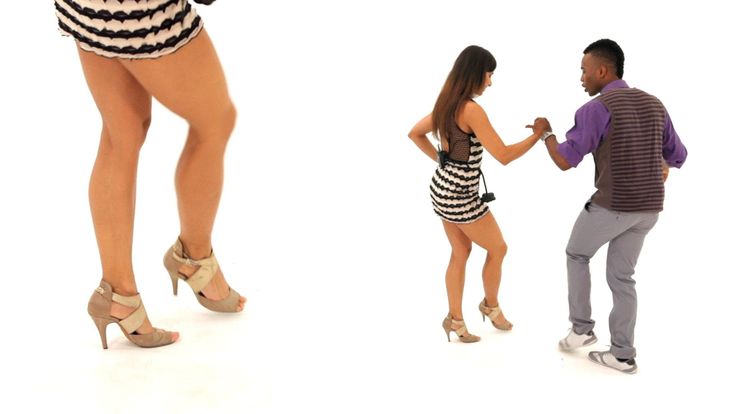 The dance came from the "bottom" and was considered vulgar - its performance was not encouraged at social events.
The dance came from the "bottom" and was considered vulgar - its performance was not encouraged at social events.
Singers and composers from the Dominican Republic, who have achieved world fame, played an important role in popularizing and developing the style. One of them, Juan Luis Guerra, released the album Bachata rosa, which was recognized by the high society of the Dominican Republic, which paved the way for world recognition for a sensual musical style. The compositions from the album were rotated on radio, television, played at weddings, parties. By the end of the century, bachata began to win the hearts of Latin American music lovers around the world. It is danced at salsotheques, clubs, discos dedicated to the Dominican theme.
Characteristics
Bachata is an original, memorable, but not difficult dance. It is performed at a moderate, even melancholic tempo, and the rhythmic pattern is 4/4. The finished measure is three steps, and on the count of "four" - the movement of the hip and the step with the straightened leg. The dance is characterized by the closeness of partners on the verge of eroticism and passion, as well as measured, sensual music. The dance is concentrated in smooth body movements, swaying the hips and moving with springy legs. At the same time, the hands of the partners perform simple movements, complementing the overall pattern of the composition.
The dance is characterized by the closeness of partners on the verge of eroticism and passion, as well as measured, sensual music. The dance is concentrated in smooth body movements, swaying the hips and moving with springy legs. At the same time, the hands of the partners perform simple movements, complementing the overall pattern of the composition.
What is the difference between salsa and bachata
Bachata is very similar to salsa - both dances are built on a 4/4 time signature, great attention is paid to the smooth movements of the hips. At the same time, salsa has many varieties, in some styles of dance the first step is performed on a strong beat, in others - on a weak one. There are lyrical, and there are incendiary compositions. Salsa is danced alone, in pairs, in threes or fours.
Bachata is less diverse, it is gentle, sensuality and frankness are expressed in it. This is an erotic dance, it symbolizes passion, it is danced in pairs. Salsa is more energetic, the music is more complex, there are various figures. It takes time to learn how to dance it. Professionals advise starting with bachata and then moving on to salsa. Almost all salseros and Latin American dancers know how to dance both dances.
It takes time to learn how to dance it. Professionals advise starting with bachata and then moving on to salsa. Almost all salseros and Latin American dancers know how to dance both dances.
Music
Bachata is a characteristic musical style that tells about unrequited love, the difficulties experienced by lovers on the way to their happiness. The music is a mixture of two directions - the Cuban son and the Spanish bolero dance. At the same time, in bachata there is no rhythm inherent in many areas of Afro-Cuban styles, but there is an invariable melody - addictive, sexy. The main core of the melody is a sad melancholic motive, with notes of nostalgia, longing for lost love.
The key instrument is an ordinary acoustic guitar, which is combined with requinto. This instrument is the closest relative of the guitar, but the sounds extracted from it have a metallic timbre and are reminiscent of African motifs. The rhythm is set by Cuban double drums, which the musician holds with his feet. In combination with percussion instruments, maracas or guinos perform, brightening up the monotonous melody and giving it an expressive sensual coloring.
In combination with percussion instruments, maracas or guinos perform, brightening up the monotonous melody and giving it an expressive sensual coloring.
In the 90s, the style of music began to change, thanks to its popularizers. Manuel Tejada adorned the arrangement of his songs with the sound of a synthesizer and accordion, and Antoni Santos changed the rhythm of the music, sped it up due to tempo variations. Bachata-Cabaret and techno suggest the presence of rhyme in the words of the songs, which have a double meaning, balancing on the verge of erotica and vulgarity.
Styles
Bachata dance does not have a wide variety of styles, but three main ones can be distinguished. Among them are the following directions:
- Dominican variety or classic version. This style of bachata dance is traditional for the islands, it is romantic and soulful, but not widely used in the world. The center of attention is the movement of the dancers' legs, complex figures that are performed with the participation of the hips and waist.
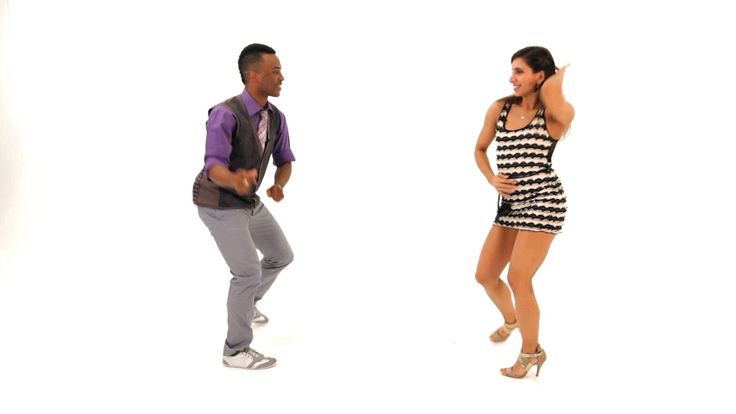
- Urban or European bachata is a popular form of dance. The main emphasis is on the work of the body and the movement of the partner's hips. Suitable for beginners - the dance consists of simple steps and a minimum of complex figures.
- Modern. The style is modern with hip-hop and other specific popular dance moves. This is a club genre of bachata - it is dynamic, incendiary, which is still developing.
How to dance bachata
This dance is designed to work in pairs, but the basic movements are learned one by one. Key elements of bachata:
- Basic step. Bend the right knee, shift the body weight to the left. Take a step to the right, transfer the weight to the same side, put the left foot, repeat. Perform all movements on the account of "one, two, three, four." Take two steps to the other side.
- Forward-backward. The left leg is motionless, the right one needs to take a step forward, attach the leg, then take a step back and attach again.
 Follow the steps with the movements of the hips, transferring the weight of the body from the right leg to the left, and vice versa.
Follow the steps with the movements of the hips, transferring the weight of the body from the right leg to the left, and vice versa. - Turn. Stand straight, looking ahead. At the expense of "one" with the right foot, you need to take a step to the side, while turning the body to the right. On the count of two, turn 90 degrees on your right foot, placing your left foot shoulder-width apart. Raise the left thigh and place the foot on the toe. Continue to describe the circle with the body, turning on the left leg. Return to starting position, finish with an accent by lifting the right thigh and bending the knee. Repeat on the other side.
- Forward movement with the "eight" of the hips. Take a step forward, transfer the weight of the body to the right thigh, put the left leg, bending both knees. Simultaneously with the step, load the left thigh, then the right again. Try to describe the “eight” with your hips, lying in a horizontal plane.
- Crossed steps. Take a step to the side with your right foot, transfer your body weight to your right thigh.
 Pull up the left leg, placing it in front of the right so that you get a cross. On the count of "three" take another step with your right foot to the side, and on the count of "four" - pull up the left, bending your knees. Each step involves transferring weight to the thigh, relaxing it along the way. On the count of "four" it is necessary to lift the left thigh up due to the contraction of the lateral muscles of the waist.
Pull up the left leg, placing it in front of the right so that you get a cross. On the count of "three" take another step with your right foot to the side, and on the count of "four" - pull up the left, bending your knees. Each step involves transferring weight to the thigh, relaxing it along the way. On the count of "four" it is necessary to lift the left thigh up due to the contraction of the lateral muscles of the waist.
While dancing, you can bend your elbows and keep your hands in front of you. Moving your hips, make circular movements with your hands, trying not to focus on them. The task of the beginner is to learn how to step correctly and move the hips to the beat, catching the lyrical rhythm of bachata. Over time, you can try to connect your hands, but when working in pairs, they are under the partner's shoulder blades.
How to learn to dance
It is quite possible to master the principles of dance on your own - you can hone your skills by dancing in front of a mirror. Learning how to dance bachata at home is possible at the initial stage. When moving to the next level, when a partner is required, it is better to take courses or pay for individual lessons with a trainer. There are several dance schools in Moscow where they will teach you how to dance, and the first lesson will be free. These are GallaDance, dance schools "Bachata", "Spicy Salsa" and "Keep the rhythm". Starting to study, you should take into account the following features of the dance:
Learning how to dance bachata at home is possible at the initial stage. When moving to the next level, when a partner is required, it is better to take courses or pay for individual lessons with a trainer. There are several dance schools in Moscow where they will teach you how to dance, and the first lesson will be free. These are GallaDance, dance schools "Bachata", "Spicy Salsa" and "Keep the rhythm". Starting to study, you should take into account the following features of the dance:
- Bachata means close contact between dancers - physical and emotional. Sometimes the need for intimacy becomes an obstacle to learning dance.
- Dance requires a sense of rhythm from the dancer, you need to listen to music and strive to get in time. This will help to achieve synchronization with the movements of the partner.
- Simultaneously with training on the dance floor, flexibility should be developed - this quality is necessary for the qualitative development of dance.
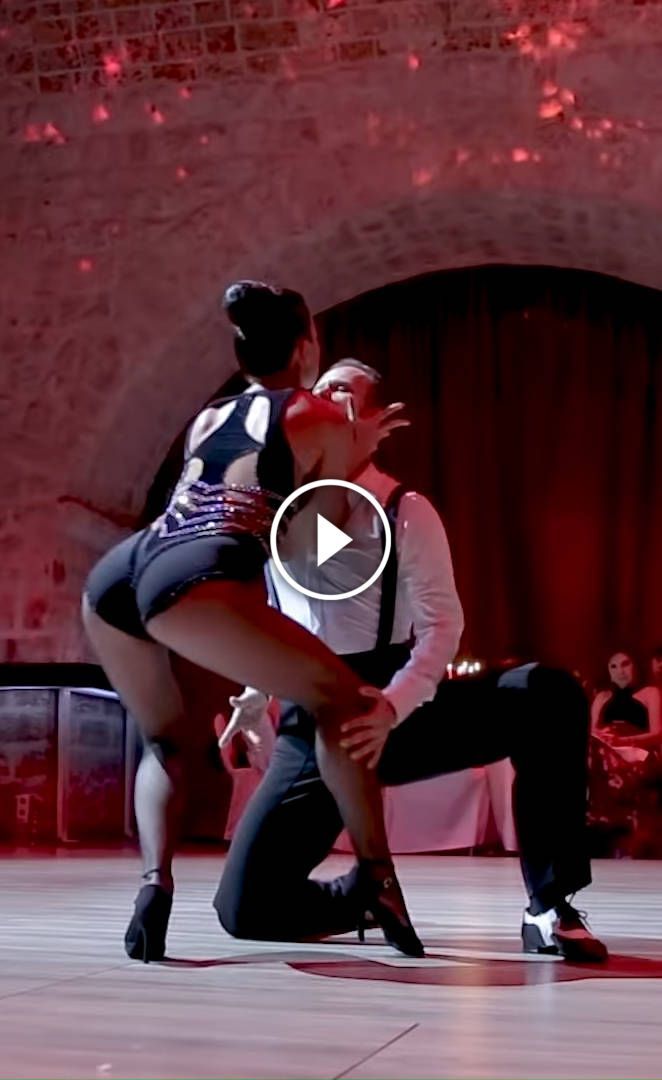
- Homework is carried out to music in front of a mirror in order to see the erroneous execution of movements.
- To make the dancer feel confident in clothes and shoes, it is advisable to wear a tracksuit and comfortable shoes or sandals with heels.
Video
Did you find an error in the text? Select it, press Ctrl + Enter and we'll fix it!
is a beautiful and sensual pair dance that originated in the distant Dominican Republic. Only in a hot country of snow-white sand, azure sea and heavenly landscapes could an equally hot and passionate dance be born. Bachata is smoothness of movements, flexibility and plasticity of bodies, hugs and a romantic mood. If you look at a couple performing this dance, there is a feeling of complete unity and harmony of the partners, as if they are driven by one common wave of bewitching music. Today, bachata is gaining more and more fans, and the main role in this trend is played by the simplicity of the movements performed, but this is an erroneous assumption that may arise when first visually introduced to the dance technique.
Bachata - how to dance correctly?
Bachata lessons should be held in pairs with a dance partner, and such an emotional contact should be established between the partners, thanks to which the dance will be performed lively and organically. It is very important for dancers to open up and make contact with a partner, and if for people with a South American temperament this is quite natural, then for reserved Europeans it is very difficult. Despite its apparent simplicity, bachata is a whole complex of complex movements that should look natural. And for this, lesson after lesson should be honed technique: here the most important thing is the synchronism of the partners and the correct course of each part of the body. In the classroom, dancers will have to master many wave-like movements and deflections, and this requires hours of training.
A few rules for beginners
Those who are captivated by this extraordinary dance, which combines the contradictions of passion, tenderness and unpredictability, should definitely learn bachata. They will be helped by dance classes with experienced trainers who will explain the dance technique in practice. But not always and not everyone has the opportunity to attend a dance school, and basic skills will never become superfluous. Here are a few basic and most important rules of bachata.
They will be helped by dance classes with experienced trainers who will explain the dance technique in practice. But not always and not everyone has the opportunity to attend a dance school, and basic skills will never become superfluous. Here are a few basic and most important rules of bachata.
- Firstly, the leader in a pair is a man, and a woman is a follower. As if obeying her partner, she dutifully follows him, and each new step is certainly accompanied by a smooth rotation of her hips.
- Secondly, bachata classes require good stretching, especially in some of the thigh and psoas muscles. However, this is not a stretch in its classical sense, when the main goal is to bend the body at a maximum angle. The plasticity of the muscles is important here, due to which the rotation of the hips will, as it were, give a wave throughout the body. For pre-training, simple tilts and circular rotations of the torso are best suited.
- Thirdly, the main element of the dance is the kick, without which bachata is inconceivable.
